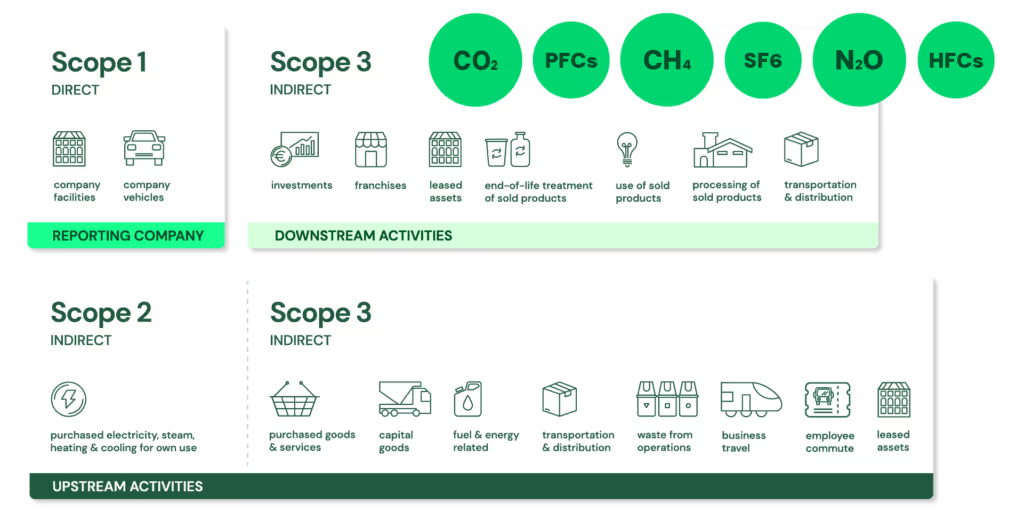How companies procure goods and services is the first indicator of their commitment to sustainability. Even if sustainable procurement was a niche consideration, it has become a cornerstone of corporate responsibility.
In essence, procurement can shape the foundation of a company's sustainability strategy by embedding environmental and social responsibility into every aspect of operations, from sourcing to production.
If you want to understand sustainable procurement and its importance in reducing your company’s carbon footprint, you’re in the right place. Here is our detailed guide!
Understanding sustainable procurement and its importance
Companies are finding that traditional procurement methods are no longer sufficient. Sustainable procurement is a transformative approach that addresses environmental challenges and opens doors to innovation and long-term resilience.
By integrating sustainability into purchasing decisions, businesses can unlock new value, meet evolving regulatory demands, and align with the ethical expectations of consumers and stakeholders alike.
What is sustainable procurement?
Sustainable procurement is a strategic process that considers the environmental, social, and economic impacts of the goods and services acquired by a company across its entire lifecycle.
The Chartered Institute of Procurement adds that companies achieve this process by generating benefits for the organisation, society, and the economy while minimising environmental damage.
In other words, thanks to sustainable procurement, your company can make choices that align with the broader goals of environmental stewardship, social responsibility, and economic resilience.
For example, sustainable procurement means:
- Selecting suppliers who are committed to using renewable resources;
- Prioritising suppliers with eco-friendly manufacturing processes;
- Choosing suppliers who are cutting down on energy use;
- Promoting sustainable transportation and logistics;
- Supporting fair trade initiatives.
What’s the importance of sustainable procurement in reducing carbon footprints?
You're wrong if you think sustainable procurement is just another checkbox on a corporate to-do list. This process significantly reduces a company’s carbon footprint and makes a tangible impact on the environment, ensuring businesses buy goods and services with sustainability in mind.
As a result, companies extend their sustainability efforts beyond their walls and especially into their entire supply chain, which allows them to lower their carbon emissions on a much larger scale.
But the benefits don’t stop there. Adopting a sustainable procurement process can also enhance a company’s reputation because it demonstrates to customers and stakeholders that the company is serious about making a difference.
Here are a few examples:
What are the benefits of sustainable procurement?
Here are some key benefits of sustainable procurement that can significantly enhance your business's performance and long-term sustainability:
- Support for carbon accounting and decarbonisation: Sustainable procurement ensures that a company is choosing suppliers who adhere to lower carbon emissions standards and broader decarbonisation goals, which directly contributes to the company’s carbon reduction efforts;
- Cost savings: Even if this is not the primary goal for some companies, selecting sustainable suppliers and materials is also an excellent way for companies to reduce waste and improve efficiency, leading to lower operational costs over time;
- Better risk management: Some risks, such as supply chain disruptions or regulatory challenges, will be better handled by companies that prioritise sustainability;
- Natural regulatory compliance: In the same logic, sustainable procurement allows companies to stay ahead of regulatory requirements and avoid legal issues;
- Enhanced brand reputation: While customer loyalty and a strong market presence remain crucial elements for a company, adopting sustainable procurement practices is an effective strategy to maximise them;
- Innovation in sustainable products and services: When a company is focused on sustainability, it becomes easier to meet the growing consumer demand for green solutions and develop new eco-friendly products and services.
These benefits are essential if your company aims to build a strong sustainability strategy. The key is to include sustainable procurement in your business practices to ensure your company remains competitive, resilient, and innovative.
The role of carbon management in sustainable procurement
Carbon management remains at the heart of sustainable procurement. Despite allowing businesses to keep track of their “numbers”, carbon management is a real proactive strategy with two main benefits: companies can understand and reduce their carbon emissions by taking targeted actions at every step of their supply chain.
Carbon accounting practices

Credit: Plan A
Carbon accounting measures and reports greenhouse gas (GHG) emissions from a company’s operations and the whole supply chain. The goal is to help businesses identify their highest emissions to understand the real-world impact of their activities.
What are Scopes 1, 2 and 3 of carbon emissions? Here are some quick definitions:
- Scope 1 includes direct emissions coming from company-owned and controlled resources and released into the atmosphere as a direct result of a set of activities at a firm level;
- Scope 2 includes owned indirect emissions coming from the generation of purchased energy from a utility provider;
- Scope 3 concerns not-owned indirect emissions, which occur in the company's value chain and are not included in Scope 2.
Examples of effective carbon management strategies in sustainable procurement
Finally, here are some effective carbon management strategies in sustainable procurement:
- Engaging with suitable suppliers: Collaborate with suppliers to find and implement ways to cut emissions across the supply chain;
- Implementing sustainable sourcing policies: Set clear guidelines that prioritise low-carbon materials and choose suppliers with solid sustainability credentials;
- Regularly reviewing carbon management practices: Do not forget to assess and refine your carbon strategies continuously to stay ahead of new technologies, regulations, and even market trends;
- Encouraging renewable energy use: Promote as much as possible the adoption of renewable energy among suppliers to lower your overall emissions;
- Investing in carbon offset projects: Your company can also support projects that reduce emissions elsewhere to offset unavoidable emissions.
Takeaways on sustainable procurement
In conclusion, sustainable procurement is a strategic approach for any business aiming to align its environmental, social, and economic considerations with long-term business success.
The best practice is to select suppliers who prioritise sustainability. This will allow your company to reduce its carbon footprint, cut costs, manage risks more effectively, and improve its brand reputation.
Sustainable procurement remains essential for any business that wants to stay competitive and resilient in a rapidly changing market.
Start your sustainability journey with Plan A’s carbon management software. Book a demo today.



.jpg)

.webp)



